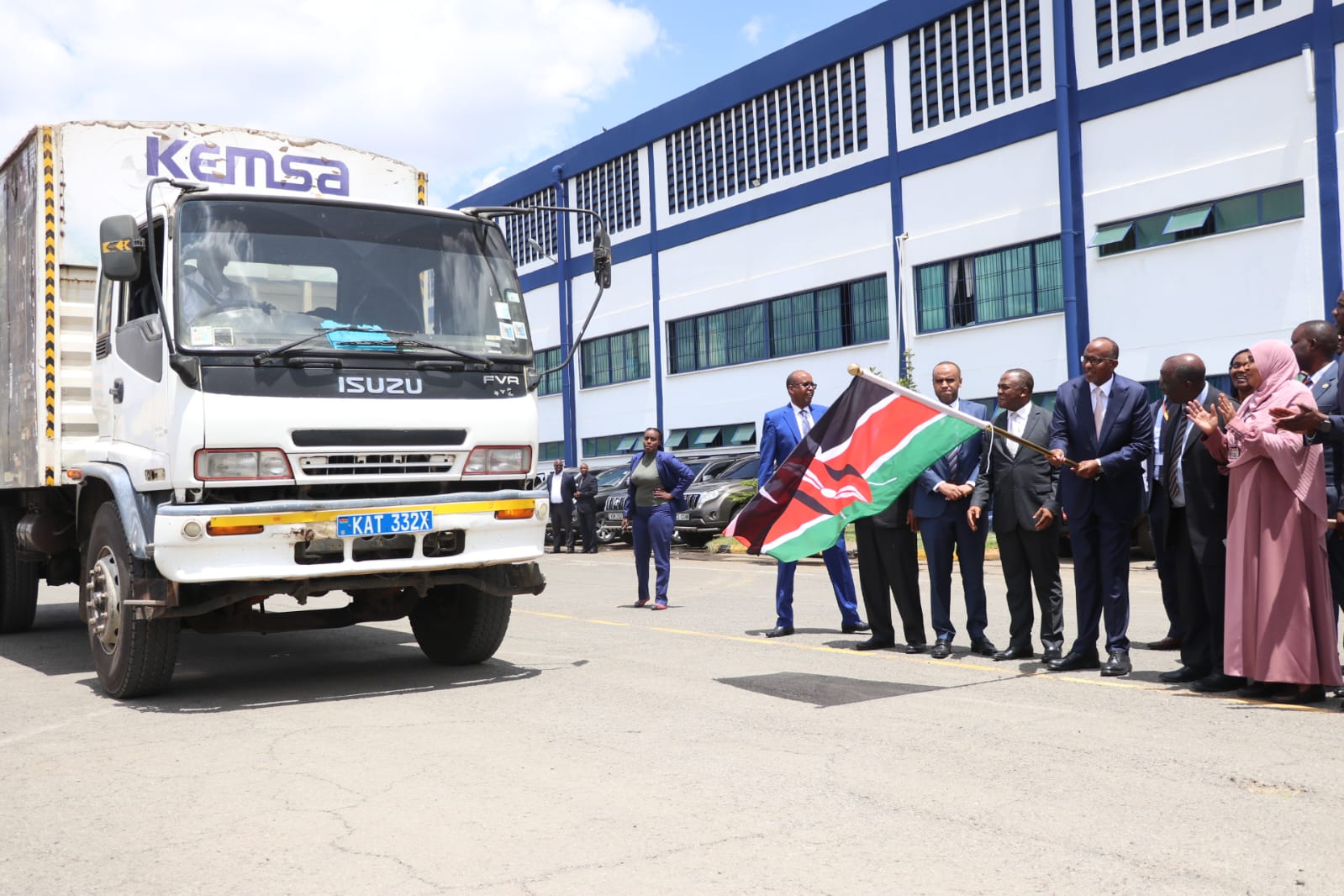 Health cabinet secretary Aden Duale during the flagging off of Ultra-portable digital x-ray systems with Computer-Aided Detection (CAD) software and launch of integrated lung health guidelines event at National Supply Chain-KEMSA, Nairobi on October 13, 2025/LEAH MUKANGAI
Health cabinet secretary Aden Duale during the flagging off of Ultra-portable digital x-ray systems with Computer-Aided Detection (CAD) software and launch of integrated lung health guidelines event at National Supply Chain-KEMSA, Nairobi on October 13, 2025/LEAH MUKANGAIKenya has taken a decisive step in its efforts to combat
tuberculosis (TB) and strengthen lung health with the launch of 80
ultra-portable digital X-ray systems equipped with modern Computer-Aided
Detection (CAD) software.
The national milestone was celebrated at the Kenya Medical Supplies
Authority (KEMSA) grounds in Nairobi, overseen by the Ministry of Health’s
Division of National Tuberculosis, Leprosy and Lung Health in strategic
partnership with the Global Fund, positioning Kenya at the forefront of
harnessing digital innovation for public health.
The ceremony, graced by the Cabinet Secretary for Health, Aden Duale, brought together leading voices from the health sector, global
development partners, including the Gates Foundation and GlaxoSmithKline (GSK).
In his remarks, CS Duale emphasised that the launch marks
Kenya’s unwavering commitment to Universal Health Coverage (UHC), equity in
health access, and the application of artificial intelligence (AI) to speed up
TB detection and improve survival outcomes for people across counties in Kenya.
“This innovation will bring diagnostic services closer to
our people, ensuring that no one is left behind in access to essential lung
health care. The integration of artificial intelligence into screening
demonstrates our commitment to leveraging technology for Universal Health
Coverage,” said Duale.
The portable systems are engineered for use at community and
primary health care levels, transforming outreach by allowing rapid,
on-the-spot screening and diagnosis in even the most remote regions.
Through a demonstration at the launch, health workers
showcased how AI-powered X-ray units can analyse chest images in real-time,
instantly identifying signs of TB and other lung diseases, hence shorteningthe time
for diagnosis.
Alongside the device launch, the Ministry unveiled the
Integrated Lung Health Management Guidelines, a product of multi-partner
collaboration and years of policy review informed by local disease patterns and
global best practices.
The guidelines expand the disease management scope beyond TB
to include chronic conditions such as asthma, Chronic Obstructive Pulmonary
Disease (COPD), and post-TB lung complications hence addressing the reality
that non-TB lung illnesses account for a growing share of deaths.
Developed with technical backing from the Gates Foundation
and GSK, these guidelines introduce new approaches, including Comprehensive
screening for infectious and non-infectious lung diseases, adoption of AI
diagnostic tools across primary care Clear referral pathways and monitoring
indicators within data systems like the Kenya Health Information System (KHIS) and community
engagement and training for health workers to broaden intervention reach
The CS reiterated that the launch is a testament to Kenya’s
digital health transformation journey, which has already seen the rollout of
the Health Information Exchange system, boosting transparency and care
continuity nationwide.
“We are building an integrated digital framework to align
donor support with national goals and ensure long-term sustainability. Digitisation
enables service delivery, telemedicine and traceability, but above all, it
safeguards patient rights and ensures accountability,” he said.
The CS hailed the flagging off of the 80 digital X-ray units
as not simply a technological handover but a landmark integration that matches
policy, innovation and grassroots action as Kenya accelerates toward health
equity, resilience, and the bold ambition of ending TB by 2030.














